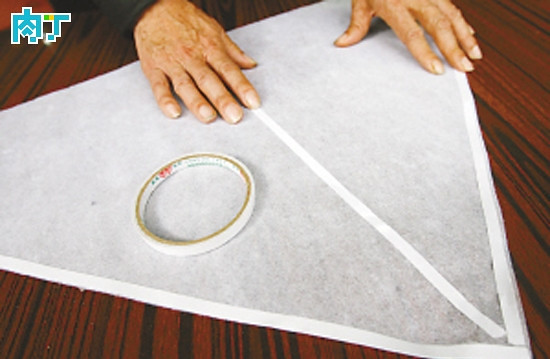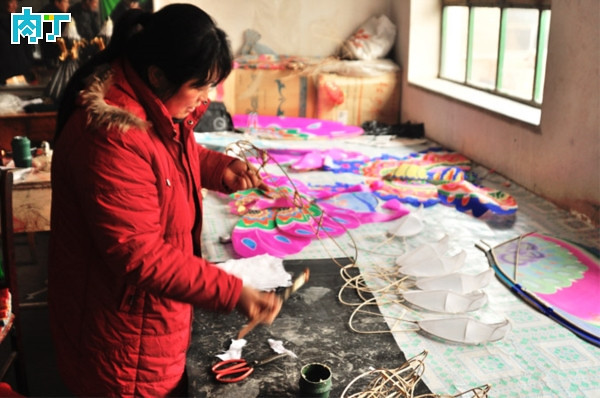
Kite-paste selection
Traditional Chinese kites and masked with paper and paperboard, and modern synthetic fiber textiles and non-woven fabric, plastic and many other materials.
1. Paper stock:
Pasting paper requested fiber length for kite, flexible, thin and light, and small amount of ventilation, good coloring, small deformation due to temperature change. Traditional Chinese kites used mostly hand-made paper of long fiber paper, Papyrus, paper, rice paper, and paper, Korean paper. There is more to modern machine-made paper, such as Wenzhou mechanism for sheets, meinong paper, scratch paper, oil seal, capacitor paper paper and so on. Choose what paper is used depends on the kite's size, location, colouring requirements, flight conditions and other factors, with Kite size. • smaller kites, paper thin, softer. For example, a smaller kite sheets, Korea used high strength paper, paper for large kites to be used by the floor-mounted.
2. Silk material:
Juan is a very thin silk textiles, light weight, high strength, good coloring, is a traditional Chinese kites masked material in common use, but the cost is very high, not suitable for beginners. By now there are some clips of man-made fibers thinner than silk textiles, such as habotai (insulation textiles) and Yang spin, they are lighter than silk, strength, breathability and less. Therefore, at present, making traditional Chinese kites are often spun in place of silk. Kites are to go through the initial handling of textiles paste, adhesive alum mixed liquid wet dry after ironing. This has two effects, one is reduce the breathability; the second is easy to paint coloring, color does not dip spread. In addition, some glue alum-treated silk stiffness, not soft as does not address.
2 alum recipe is traditional gum gum, alum 1, water is 36. Or 20 grams of bone collagen plus 10 grams of alum and 360 grams water heat dissolved into a liquid. But some kites are not treated with rubber alum "raw" Silk hooded. Another of its special effects.
3. composite materials:
Often using composite masked traditional kites, which uses silk tissue paper or paper tray bitch. This material strength, airtight good, good coloring, unmatched performance with paper and silk.
4. New materials:
These traditional Chinese kites and masked material has two major drawbacks: one is not water resistant, color after a wet down, masked men also damaged. Second is the strength to stand strong winds and flying test. I remember once at a kite performance abroad, the author placed a large traditional Chinese Butterfly kites, wind that day more than 5 levels, high altitude wind more, accept this kite in half an hour, and its wings and tail were torn into strips, and foreigners of nylon fabric kite safely without incident. In order to solve this problem, we should consider the application of new materials. Nylon non-woven cloth and silk, silk brocade, plastic film, is a very good material. They're good air tightness, not afraid of water, the first three strength far greater than the paper and silk. Many varieties of plastic film, and some extremely thin, weighing only imports 1/10. But it also brought new problems, such as coloring, gluing is not a new approach. This problem will be in the back "Paste", "paint" in the discussions.

Kites II-paste clip
Cut refers to the material masked, like dresses.
1. Taking shape:
Kite plane section take shape easily, as long as the masked profile in kite drawings painted on to materials is done. But there are many in the kite surface, such as the swallow's wings, is a complex surface, must take shape on a piece of paper on the skeleton of the swallow wings than good, and cut out along the edge, then press the pattern painted on the masked material.
2. Left side:
Edge of material must be slightly larger than the pattern, and slightly larger than the paste masks of curling.
3, texture:
Whether paper or textiles, most of which have their own texture, material must be taken into account when the texture, be sure to make a kite around textures, symmetry, and avoid the use of tilt texture.
4. Material:
Without prejudice to the premise of the above three requests, how to save the material is material should pay attention to the problem.
Kites II-paste paper
How to paste in the kite hooded skeleton, is the key to paste art.
1. Glue:
Before the paper, often coated in plastic skeleton. What kind of glue, coating on the skeleton? Is this section to solve the problem. When paper, silk, currently the best adhesive is LaTeX (polyvinyl acetate emulsion), concentration depends on the paste and glue material will, in principle, the thicker paste material, not of great strength, can dilute the glue. Paste material strength, required bond strength, glue a bit strong. Glue is best lightly coated with a brush on the skeleton, glue should be uniform. Note that some skeleton in the corner, don't accumulate a lot of glue, which makes masks is not flat.
2. Masked:
Adhesive-coated frame masked to be accurately placed on the framework, moving as little as possible. Otherwise it will wipe off the glue. Masked on the framework to smooth tension throughout, must not be tight in some places, some loose, this will cause the kite to distortion, seriously affecting the flight. Hooded skeleton in position, gently press around, make masks with skeleton put in prison, but isn't busy crimping. Because before the glue is dry around the edge will cause uneven tension phenomenon.
Kites II-paste corrections
After masked men glued to the frame, paste kite is at the edge of an important step in this process. Can have different processing methods based on different circumstances.
1. Cutting edge:
When the kite is small, and masked with the kite frame bonding strength is large, can cut off the remaining edges with a knife, called "cutting edge".
2. Curling:
When you want to increase strength, edge cut excess part part coating volumes after coming, called "curling"
3. Hemming: Works of Chinese folk art museum collections boutique
When more strength is required, to part of the surplus after curling seams, called "hem".
4. Sticky:
When using plastic film when masked, its adhesion to the skeleton often enough, and should not be sutured, then use the extra edge of roll bonding method, called "stick".
5, correction
In the masked process to continually check the correct position of the armature of kites, found to be distorted, asymmetrical situation such as to correction at any time, otherwise the whole kite paste out later found that the problem is not corrected.
No comments:
Post a Comment